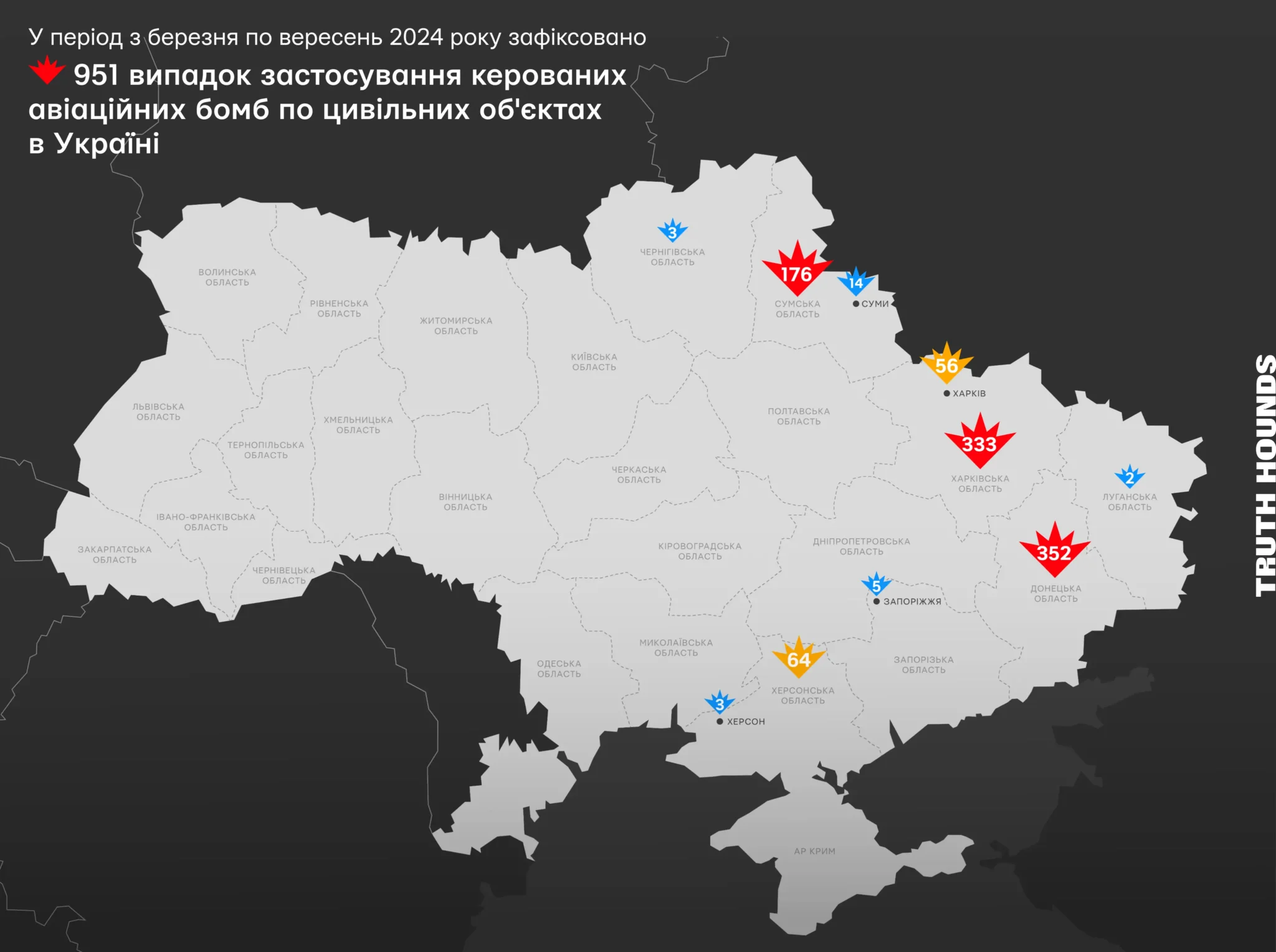Study: in September, Russians released about 100 guided bombs a day
13 December, 2024 FAB-3000 bomb with UMPK kit. July 2024. Photo: Russian Ministry of Defense
As of September 2024, the Russian Aerospace Forces used an average of one hundred guided bombs per day in Ukraine. This is stated in the third section of the study by Truth Hounds investigators. The study notes that according to some sources, in August 2024, Russian aviation used 2998 guided bombs in Ukraine, and in September this number increased by 10% to 3342.
These data coincide with the April statement of Ukrainian President Volodymyr Zelenskyi, where he announced the figure of 3,000 bombs used against Ukraine.
 Statistics on the use of Russian guided bombs from March to September 2024 in Ukraine. Source: @M0nstas, September 30, 2024
Statistics on the use of Russian guided bombs from March to September 2024 in Ukraine. Source: @M0nstas, September 30, 2024
Aircraft bombs with gliding and correction modules (UMPK) are cheap, simple, and mass-produced weapons that can be used by Russian Aerospace Forces without significant risk. However, sometimes such strike operations end tragically for the Russians.
The figures cited by Truth Hounds cover all cases of attacks by guided aerial bombs, including strikes on military positions along the front line. At the same time, a significant number of bombs were aimed at civilian targets located far from the active combat zones, in particular in cities such as Kharkiv and Sumy.
 Infographic of the use of UMPK bombs against cities. Source: Truth Hounds
Infographic of the use of UMPK bombs against cities. Source: Truth Hounds
Attack trends
There is a clear trend: after each Ukrainian attack on the airfields where Su-34 fighter-bombers are based, the number of bombs launched decreases for a short time.
There are other patterns as well: after the attacks on Russian airbases in August, the intensity of attacks on regions that had not previously experienced such a density of attacks, such as Sumy and Kherson regions, increased several times. After that, the next month saw a significant increase in the number of attacks in all regions, creating an exponential trend of attacks with UMPK bombs in Ukraine as a whole. Zaporizhzhia, which the Russian army began bombing in September 2024, is worth mentioning separately.
Until now, Truth Hounds has not recorded such attacks.
Attacks on large cities
During the period under review, large cities with populations of many thousands, including Sumy, Zaporizhzhia, Kharkiv, and Kherson, were subjected to intense bombing attacks, with a total of 78 attacks recorded. This suggests that, despite the successful strikes on UMPK bomb depots, the decrease in the number of attacks is a temporary phenomenon.
 Russian FAB-500 bomb with upgraded UMPK kit, August 2024
Russian FAB-500 bomb with upgraded UMPK kit, August 2024
Over time, the Russian Aerospace Forces not only did not reduce, but also increased the intensity of strikes due to the increase in production capacity and the use of significant stocks of Soviet bombs. Continuous air strikes on populated areas with high intensity demonstrate the deliberate and systematic nature of such actions.
Due to cheap components and the impact of EW in urban areas, the actual accuracy of the Russian Aerospace Forces guided bombs does not correspond to the declared 15 meters.
This significantly increases the risks to the civilian population.